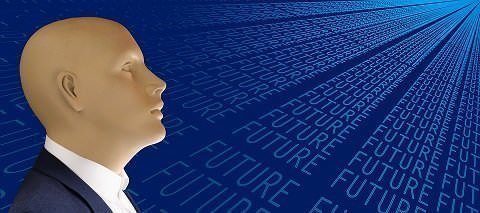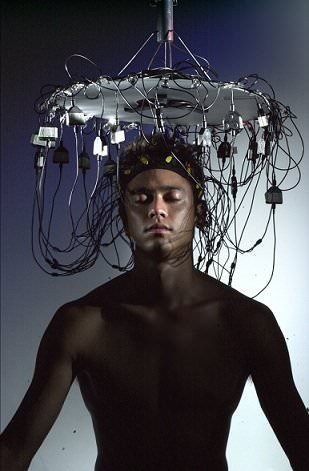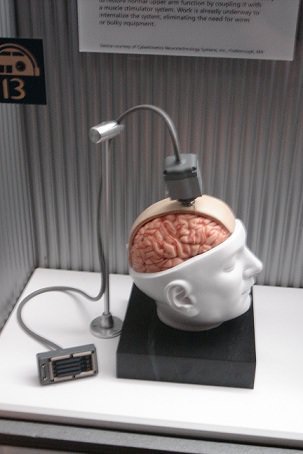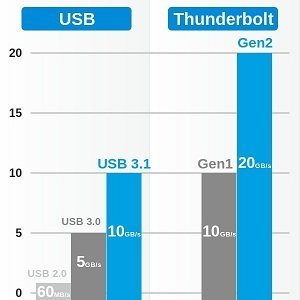Why Digital Immortality May Not Be Possible - Or Maybe It Can; Let's Find Out
It is no longer news that technology; particularly the one involving Artificial Intelligence and Cybernetics; have been making waves lately. Again, it has been one of man's earnest desires to replicate "nature" mechanically. This is why we have seen attempts here and there to simulate human biological functions with mechanical devices. All these advancements have one focal point, which is to improve the adaptability and survival of the human species. However, with all these advancements, one area is still lagging behind, and this is the area of immortality.

Introduction
A question has been popping up in my mind for long: "Will it ever be possible for humans to achieve immortality?" I once read about the Jellyfish (Turritopsis dohrnii) a few months ago and how they have been regarded by scientists as being biologically immortal. However, we should not rule off the fact that humans do not have the ability of reversing the process of senescence (aging) yet. This is why other options are constantly being sought out for in order to create a pathway to immortality. The method that seems to be a potential substitute to biological immortality is the "digital immortality" or cybernetic immortality. Here, we will look at the downturns of this and why people think that attaining this will not be as easy as it sounds.
Creating a Pathway to Digital Immortality
When there is a permanent cessation or stoppage in the total activities of the human brain (like efferent activities, psychomotor activities, cognition, self-awareness and even consciousness), we say that the individual is brain-dead right? But what if, just before the cessation of consciousness in the human brain, a backup is created and posthumously transferred to another body (maybe a bionic body) will that help to preserve the consciousness of the individual? (Remember, your consciousness is arguably the real "you"). At this point, may remind you again that a perfectly advanced and established technology is almost indistinguishable from magic - according to Arthur C. Clarke.

We have seen many organs of the human body being replicated by bionics and the individuals living fairly normal lives. A few years ago, we saw a case of Stan Larkin who had a severe case of cardiomyopathy (abnormality in the heart). To save his life and to wait for an organ for transplant, he underwent a surgical proceeding where the infected heart was removed and he was implanted with a bionic heart which sustained him for about 1year and 6months till an organ was available - this case is just to mention the least, so why can't the human brain function be replicated bionically? Well, we will look at the hurdles that will be passed before the possibility of digital immortality will be in view.
Creating a Digital Backup for the Human Brain
I once read a technology article a few months ago about how scientists are working to upload parts of human brain activities, which includes consciousness, into computers. Over the years, people have compared the human brain function to that of a digital computer - this is why attempts have been made to simulate these functions artificially. The highpoint of this came with the reference of the late Stephen Hawking in the same article I cited above where he talked about the possibility of creating a human brain data and uploading it artificially into a computer (in his opinion, he believed that this was the pathway to creating a type of immortality).
Asides Stephen hawking, some proponents of Artificial Intelligence have tried to relate the principle of the working of the human brain to computers - they tend to call the human brain the Operating System (Software) of the mind. Just to make points clearer, the computational abilities of digital computers are getting advanced with each passing year. A few years ago, the fastest computers then had a processing power of few FLOP per second, but today we have computational beasts like the Tianhe- 2 server that has the ability of performing 33.9 quadrillion FLOP in one second [ref]. With all these advancements in computational power, can human mind (and consciousness) be preserved digitally?

I'm sure some of us have heard of the man Ray Kurzweil (a scientist and renowned proponent of AI and singularity). In one of his predictions, he talked about humans achieving an interaction and bonding with machines. He believes that this interaction can provide the neural pathway through which the human brain activities can be copied into computational devices and stored. However, before you get excited with this prediction by Ray Kurzweil, let me make some points clearer for you.
Reading and Accessing Data/Information from the Brain
This is the most important point to consider in the attempt to create a brain-machine backup. Computer scientists will agree with me that computer devices store information primarily in binary codes - bits (ones and zeros), but the human brain is somewhat different here. More so, the human brain is not like a piece of paper that you can flip to copy whatever information you desire. In the human brain, information is not localized in a particular neuron, and also, neurons (which are considered as the fundamental unit of human brain) are interconnected with other neurons to effectively transmit information. This complex nature of the human brain has been the major drawback in creating a brain backup.
A particular research was conducted by a group of neuroscientists and they discovered a method to effectively scan the human brain using "Functional Magnetic Resonance Imaging" and with the help of a specialized software, these images were analyzed and fragments of information collated to form a whole data.

Now, gaining access to the human brain is not where the journey stops, how about copying the data so as to create a digital backup for it and also uploading the information into the destination brain. Okay, this is where another major obstacle lies.
Copying of Brain Data
Most of us have used a USB/Flash Drive before to copy files and all. All you need to do is; plug the Flash Drive, select the file, copy it and paste in the desired location (with Windows shortcut like ctrl+C and ctrl+V, the copy and paste option is simplified). However, the human brain does not function in similar manner. Here, we are talking about an organ that can store an estimated data of 2.5 PB (Petabytes) ref. You wanna know the value of Petabyte? 1PB = 1015 Bytes (1 quadrillion bytes). If I may ask you, what is the fastest USB drive you have used? The most popular is the USB 2.0 with about 60MB/S, though the USB 3.1 can go as high as 10GB/S. There's a new one called "Thunderbolt 2" - this has an effective transfer speed of 20GB/S. Okay let's take an image comparison of the speed of Thunderbolt 2 for better understanding.

Looking at the above image, the fastest speed that Thunderbolt 2 can go is 20GB/S, but we're talking about 2.5 PB of data. With the fastest speed of Thunderbolt 2, it will take weeks of uninterrupted connection to completely copy the brain data (assuming we're using the same protocol with Thunderbolt 2). Now the question is; how feasible is it to create weeks of uninterrupted connection with the human brain?
If you go pass this obstacle, obviously the next obstacle is how to effectively and practically map the brain with accuracy and precision - remember that the entirety of the human thoughts and consciousness is not residual in just a single neuron. Okay, we should not rule off the fact that the tech world is advancing, at least credit should be given to that, but even if they successfully map the brain and copy the brain data, on which brain will it be uploaded posthumously? Obviously, the possibility of transferring it to another human brain is very bleak, unless a technology will be made available to completely erase the existing data and information in that brain for new one to be uploaded. So the best option here is a bionic body. Steps have been taken in the right direction in creating synthetic bodies. I have never believed anything less of technology, and I know that one day, all these obstacles will be passed. We might be approaching a future where someone's consciousness can be preserved and transferred to another entity posthumously, but until then, may I remind you that you are still mortal, so you should make the most of your life.
Final Words
Death has been viewed by many as a sure and inevitable end. But what if I tell you that in few years from now, we might have a different view of death and immortality, will you believe me? Y'all will agree with me that the line separating biology (humans, in this context) with machines is eroding with the advancement of technology - this is why I'm cautious with the use of the word "impossible" because those that have concluded that something is technologically impossible were interrupted by people performing the impossible... achieving digital immortality might become one of the "impossibilities" to be achieved.
Thanks for reading
> References for further reading:
- Humans achieving digital immortality
- Living forever - transferring consciousness to another body
- Uploading human consciousness in computer
- Scanning and mapping of the human brain
- Human brain memory capacity
- Transferring human consciousness
- Transference of consciousness


gif by @foundation
I wanted to read it all. Truly. But I got lost.. LOL
Posted using Partiko iOS
Lol. Just relax and read it all. Some people might think that this is future tech, but the future is already here with us. I once told someone many years ago that in few years, we might not be able to distinguish between organic (non-augmented) humans from machines... and now, the process has already begun.
If you're a movie fan, I'll recommend you watch "Upgrade". Trust me, you'll love it
Ok, let me go over it again 😊
Posted using Partiko iOS
Sweet and enigmatic, wow I'm still trying to calibrate what I'm reading
Lol. Thanks a lot buddy
This post has been voted on by the SteemSTEM curation team and voting trail. It is elligible for support from @curie and @utopian-io.
If you appreciate the work we are doing, then consider supporting our witness stem.witness. Additional witness support to the curie witness and utopian-io witness would be appreciated as well.
For additional information please join us on the SteemSTEM discord and to get to know the rest of the community!
Thanks for having added @steemstem as a beneficiary to your post. This granted you a stronger support from SteemSTEM.
Thanks for having used the steemstem.io app. You got a stronger support!
Hi @samminator!
Your post was upvoted by Utopian.io in cooperation with @steemstem - supporting knowledge, innovation and technological advancement on the Steem Blockchain.
Contribute to Open Source with utopian.io
Learn how to contribute on our website and join the new open source economy.
Want to chat? Join the Utopian Community on Discord https://discord.gg/h52nFrV